Malaysian Food: Basic Overview
Common Ingredients
Common Cooking Methods
Courses
Meals
Key Taste
Eating Etiquette
Meal Presentation
Culinary Festivals
Influence and Fusion
Popular Types of Malaysian Food
-
Noodle soups
Malaysian noodle soups are a harmony of rich, aromatic broths, often infused with spices and herbs.
These soups typically feature various types of noodles, ranging from thin rice noodles to thicker varieties.
They are commonly adorned with meats like chicken, prawn, or fish.
The flavors range from mildly spiced to intensely hot, catering to a broad spectrum of palates.
-
Dry noodle dishes
In Malaysian cuisine, dry noodle dishes are a staple, characterized by their lack of broth and a strong emphasis on seasoning and sauces.
These dishes often include a mix of boiled, fried, or grilled meats, tossed with noodles and a variety of sauces, herbs, and spices.
They provide a textural contrast, combining the chewiness of the noodles with the tenderness of the meat and the crunch of fresh vegetables.
-
Cakes and pastries
Cakes and pastries in Malaysia are a delightful blend of traditional and modern influences, showcasing a variety of textures and flavors.
Utilizing ingredients like coconut, pandan leaves, and rice flour, these treats range from sweet to savory.
Many Malaysian cakes and pastries are steamed rather than baked, giving them a unique, moist texture.
-
Curries
Malaysian curries are a rich and diverse aspect of the cuisine, often featuring spices, coconut milk, and a variety of proteins like chicken, beef, or seafood.
The depth of flavor in these curries is a result of slow cooking and the layering of spices, herbs, and aromatics.
-
Desserts
Desserts in Malaysian cuisine are as diverse as they are colorful, often featuring ingredients like coconut milk, palm sugar, and a variety of tropical fruits.
From shaved ice desserts to sweet puddings and jellies, these treats are not only a feast for the taste buds but also for the eyes.
-
Grilled and barbecued dishes
Grilled and barbecued dishes in Malaysia are a testament to the country’s love for intense flavors and smoky aromas.
These dishes often involve marinating meats in a blend of spices and herbs before grilling them to perfection.
They feature tender, flavorful, and often spicy fare that is a staple in Malaysian street food culture.
-
Pancakes
Malaysian pancakes range from sweet to savory, often incorporating ingredients like coconut, rice flour, and a variety of fillings.
These pancakes are typically thin and light, with a texture that can range from crispy to soft and chewy.
-
Rice dishes
Rice is a central component of Malaysian cuisine, served in a variety of ways, from steamed to fried.
Malaysian rice dishes often incorporate a medley of flavors, spices, and ingredients such as meats, seafood, and vegetables.
Malaysian dishes are different savory and sweet delicacies widely enjoyed across Malaysia, a Southeast Asian country including Peninsular Malaysia.
While several dishes, like nasi lemak and nasi kandar, are native, others come from foreign countries, like chai tow kway and popiah from China.
Well-loved local dishes range from savory dishes like soups, stews, and grilled dishes to desserts like banana fritters. I’ll introduce each dish’s main components, cooking methods, and local variations.
Afterward, you’ll get to see all the characteristics of this cuisine, including its types of food. Next is a detailed answer to how this cuisine affects other foods from Southeast Asian countries like Thailand, Indonesia, and the Philippines.
Plus, I’ll also drop you some options for pairing dishes with beverages in Malaysia.
41 Popular Malaysian Dishes with Filters
Remember to use the filter system that rearranges these specialties in alphabetical order, dish types, ingredients, cooking methods, tastes, and global popularity.
Furthermore, it’s best to check out the available culinary styles of Malaysian food, including choices like the most popular, national, traditional, street food, and fusion options:
Nasi Lemak
- National
- Traditional
Nasi lemak is a popular Malaysian rice dish cooked in coconut milk and pandan leaf. As a national dish, nasi lemak is integral to regular Malay-style breakfast and the feast of Eid.
Nasi lemak’s star is undoubtedly rice cooked in coconut milk for a creamy flavor. This coconut rice is traditionally paired with sambal (chili sauce or paste) and other garnishes like fried anchovies, sliced cucumber, a boiled or fried egg, and roasted peanuts.
As for a more filling meal, nasi lemak will go with other protein dishes like ayam goreng (fried chicken), rendang (braised meat in coconut milk), and sambal sotong (cuttlefish in chili sauce).
Roti Canai
- Street Food
Roti canai is a well-known flatbread in Malaysia and other Southeast Asian countries (Brunei, Indonesia, Singapore, Thailand, etc.) with roots in India. This flatbread’s debut dates back to the 19th century when Indians brought it to Southeast Asia.
Roti canai has various local versions, both savory and sweet. Among them, the best-loved is murtabak, a thick roti stuffed with eggs, garlic, onions, and minced meat. Murtabak is available in many Indian Muslim restaurants and street stalls.
Laksa
- Traditional
Laksa is a beloved spicy noodle soup commonly eaten in Malaysia, Indonesia, and Singapore. Laksa usually contains thick rice noodles topped with chicken, prawn, or fish.
Depending on the broth’s flavor and ingredients, laksa is divided into 2 main types: asam laksa and curry laksa.
The asam version is a specialty of the Penang island, thus another name: Penang laksa. Asam laksa’s soup uses mackerel and tamarind (asam) for a signature sour taste.
Meanwhile, curry laksa is another name for curry mee, using coconut soup with various toppings: beansprouts, eggs, herbs, and deep-fried tofu. Curry laska also goes with sambal as a condiment
Char Kway Teow
- Street Food
Char kway teow is a stir-fried rice noodle dish popular in Malaysia and Singapore in the late 20th century. Originating from Maritime Southeast Asia, these stir-fried rice noodles were traditionally made for Chinese laborers in Southeast Asia.
Besides flat rice noodles, char kway teow also includes bean sprouts, blood cockles, Chinese chives, Chinese sausages, and whole prawns. All ingredients are stir-fried and seasoned with dark soy sauce and shrimp paste.
A special char kway teow version made by Muslims replaces no lard and other pork products with beef or chicken. For a fancier variation with seafood like crab meat and duck eggs, come to major cities like Ipoh and Penang.
Nasi Kandar
- Traditional
Nasi kandar is a famous Northern Malaysian dish consisting of steamed rice with different curries, gravies, and side dishes. Original nasi kandar only goes with fish curry and beef curry. But today, the curry choices have ranged from meat to seafood and vegetables.
Other side dishes for nasi kandar include fried chicken, fried prawn, fish roe, and fried squid. Although the rice was traditionally served with other side dishes on a plate, the side dishes are placed in separate small bowls today. Still, the curry is always poured directly over the rice.
Apam Balik
- Street Food
Apam balik is a peanut pancake widely sold at specialized roadside stalls throughout Malaysia, Indonesia, Brunei, and Singapore. This peanut pancake is generally made with coconut, eggs, flour, and sugar, with crushed peanut filling.
The name “apam balik” translates to ‘turnover pancake’ in English. Apam balik also has several regional names, such as kuih haji, chin loong pau in Kuala Lumpur, or terang bulan in Sabah.
Satay
- National
- Street Food
Satay refers to many grilled meat skewers popular in Malaysia and other Southeast Asian countries, like Brunei, Philippines, Thailand, and Singapore, with sate as its local name. Sate is a common street food sold by many local hawkers and restaurants.
Local satay often uses beef and chicken, but each region has different satay variations. Among them, sate Kajang, a specialty of Kajang city with larger meat chunks, is well-loved across the country.
Banana Fritters
- Street Food
Banana fritters are called pisang goreng in Malaysia, which involves deep-frying battered plantain in hot oil. Pisang goreng is usually a local morning and afternoon snack sold by various street vendors. Other stores or hawker centers also offer these banana fritters.
Pisang goreng (cekodok pisang and jemput-jemput pisang) is a Southeast-Asian street snack made from fried bananas. The Portuguese made banana fritters for the first time in 1511 for breakfast. Before the Portuguese arrived, the Malays only ate raw bananas.
Ais Kacang
- Traditional
Ais kacang is a common shaved ice dessert in Malaysia, Brunei, and Singapore. This shaved ice is also called ABC, shortened for air batu campur (mixed ice). Meanwhile, ais kacang means “bean ice”, referring to another main ingredient: red beans as a topping.
However, ABC today contains various ingredients besides red beans: agar agar, cendol, grass jelly, roasted peanuts, sweet corn, and ice cream. Condensed milk, coconut milk, or sweet-flavored syrups are drizzled on top as the last touch.
Nasi Ulam
- Traditional
Nasi ulam is a popular rice dish in northwest Peninsular Malaysia, including cold steamed rice served with various shredded herbs, like cashew leaf shoots, onions, and wild pepper leaves. The locals sometimes add shredded fried fish for more nutrients.
Nasi ulam has a famous type called nasi kerabu, containing blue rice with fried chicken or dried fish, crackers, pickles, and salads. No matter which type, nasi ulam is usually eaten with sambal.
Rendang
- Traditional
Rendang is a rich meat dish braised in coconut milk with various spices and herbs commonly enjoyed in Malaysia.
Native people often simmer the meat until the liquid almost evaporates, leaving the meat tender and caramelized. Therefore, rendang isn’t counted as local curries since it’s richer and has less liquid.
Rendang has appeared for a long time, resulting in numerous versions in different states. Today, this braised meat in coconut milk is also widely enjoyed among Malay communities in other countries like Indonesia.
Bak Kut Teh
- Traditional
Bak kut teh is a Malaysian and Singapore pork rib dish particularly prominent within the Hoklo and Teochew communities.
Bak kut teh means “meat bone tea” in the Hokkien dialect but doesn’t contain any tea. This name refers to the primary ingredients: pork ribs simmered in a spiced broth. Cinnamon, cloves, dong quai (female ginseng), fennel, and star anise are common spices.
Another explanation for the “meat bone tea” name is that bak kut teh often goes with a strong oolong tea, as the tea is believed to dissolve pork fat. Bak kut teh has another variant called “chick kut teh”, which switches the pork for chicken.
Hokkien Mee
- Street Food
Hokkien mee is a noodle dish well-loved in Malaysia, Indonesia, and Singapore, with distinct versions in each country. Hokkien mee’s name means “Fujian noodles”, referring to its origin in the Fujian province.
Local hokkien mee has 2 versions: Penang hokkien mee and hokkien char mee. Penang variation is a noodle soup with spicy prawn broth. The stock is usually made with pork ribs, prawn heads, and shells.
As for the noodles, vermicelli and thick egg noodles are the most common options. Besides, a bowl of Penang Hokkien mee also contains boiled eggs, sliced pork, pig skin, and water spinach as toppings.
Meanwhile, hokkien char mee often appears in Kuala Lumpur and other surrounding areas. This Kuala Lumpur doesn’t have much stock. Instead, hokkien char mee consists of thick yellow noodles braised in black soy sauce. These braised noodles often come with lardons.
Cendol
- Fusion
- Traditional
Cendol is an iced dessert popular across Malaysia and other Southeast Asian nations: Brunei, Cambodia, Laos, Vietnam, etc. Cendol’s main components include coconut milk, green rice flour jelly, and palm sugar syrup. Other toppings vary depending on the country.
For example, local cendol usually has creamed corn, durian, grass jelly, glutinous rice, ice cream, sweetened red beans, and tapai (fermented rice paste). Local residents usually serve this iced dessert in a bowl instead of a tall glass.
Due to its popularity, the Malaysian Department of National Heritage declared cendol a heritage food.
Mee Goreng
- Street Food
Mee goreng, or mi goreng, is a fried noodle dish well-known in Malaysia and Malay-speaking communities in other countries, like Brunei and Singapore. Mi goreng is often sold at Mamak stalls (Indian Malay Chinese-style food establishments), hence another name: mee goreng marak.
Maggi goreng, or maggi mee goreng, is a type of these fried noodles, using instant noodles instead of fresh yellow noodles.
Nasi Goreng
- Fusion
- Traditional
Nasi goreng is a popular fried rice dish in many Malaysian families, food courts, and restaurants. Unlike other fried rice dishes, nasi goreng has a signature smoky aroma and caramelized flavor.
This fried rice is super flexible as each house has its own variation with different ingredients and toppings. Still, common local nasi goreng contains sambal, salted fish, or shrimp paste. There is a popular variant called nasi goreng kampung with additional anchovies or fried fish.
Nasi Campur
- Traditional
Nasi campur is a popular mixed rice in Malaysia and other parts of Southeast Asia, consisting of steamed rice with various small side dishes. Local food stalls and restaurants will prepare 20 to 80 options for the diners.
The side dishes are served separately or on the same plate with rice, depending on the place. However, the former serving method is more preferred.
Kuih
- Traditional
Kuih refers to many traditional bite-sized sweets in Malaysia and Southeast Asia, including biscuits, cakes, cookies, dumplings, pastries, and pudding. Malay kuih is usually sweet and made of grated coconut, pandan leaves, palm sugar, and rice or glutinous rice.
Local residents have created many signature kuih varieties: apam balik, bahulu (round madeleine cake), curry puff (curry-filled pie), akok, klepon (sweet rice cake balls filled with molten palm sugar), putu piring (round steamed rice cake), etc.
Roti Bakar
- Traditional
Roti bakar is a type of toast bread commonly served as a breakfast food and snack in Malaysia, Indonesia, Brunei, and Singapore. This toast bread often uses white bread, traditionally grilled over charcoal.
Roti bakar is usually served with cold butter and kaya (coconut jam), like Singaporean kaya toast. Many kopitiams (coffee shops) serve this toast bread with half-boiled eggs and local tea or coffee.
Rojak
- Traditional
Rojak is a popular fruit salad in Malaysia with a Javanese origin. Rojak includes sliced fruits and vegetables, served with a spicy dressing made of chili, lime juice, shrimp paste, sugar, and water.
Common components of local rojak are bean sprouts, cucumber, jicama, pineapple, fried tofu, and youtiao (deep-fried wheat dough strip). A famous variant, rojak penang, focuses more on tart fruits, like green apples and young mangoes, while eliminating bean sprouts and tofu.
This Southeast Asian country also has another rojak called Indian rojak, widely sold in Mamak stalls. This Indian rojak uses more savory ingredients: cuttlefish, hard-boiled eggs, and prawn fritters, all dressed in a sweet, spicy peanut sauce.
Keropok
- Street Food
Keropok is a popular cracker in Malaysia and maritime Southeast Asia. Local keropok often uses fish and seafood, while crackers made with other foods are called kerepek, such as prawn crackers.
Among all varieties, the most popular is lekor (keropok lekor), a cracker made with fish and sago flour. Find the best keropok in local fishing towns, such as Mukah town in Sarawak.
Roti Jala
- Traditional
Roti jala is a savory lace pancake in Malaysia, Indonesia, and Singapore under other names: roti kirai and roti renjis. This lace pancake often replaces rice in a combo with chicken curry, served in three to four sets.
Roti jala is usually homemade with eggs, flour, milk, and turmeric. This lace pancake is for tea time or special events like festivals and weddings.
Banmian
- Traditional
Banmian is a popular noodle soup in Malaysia, including egg noodles and fish, meat, or vegetables as toppings. Dried anchovies, ground pork, mushrooms, and sweet potato leaves are common choices.
The broth is often made with fish stock with different flavorings, like bean paste, garlic, ginger, and onions. Banmian is available in many restaurants, food stalls, and street vendors nationwide, with dry noodles and broth served separately.
Asam Pedas
- Traditional
Asam pedas is a popular sour and spicy fish stew in the Malay Peninsula. Originating in West Sumatra, Indonesia, this fish stew has become integral to local cuisine and traditions.
Asam pedas’ main components typically include freshwater fish or seafood cooked in a spicy and sour broth of tamarind juice, chili, and other spices. This fish stew has other vegetables, like Indian eggplants, okra, and tomatoes.
Roti John
- Fusion
- Street Food
Roti john is a famous omelet sandwich on Malaysian street from Singapore, particularly during the 1960s or 1970s. This omelet sandwich consists of a baguette loaf filled with eggs, minced meat, and chopped onions.
The filling mixture is often fried before placing in the baguette. Then, local sellers dip the filled baguette in beaten egg and fry it until crispy and golden. Roti john usually comes with tomato-chili sauce.
Chai Tow Kway
- Street Food
Chai tow kway is a fried radish cake that is super popular in Malaysia and Singapore. Before coming to these 2 countries, this radish cake is a common dim sum choice in Chaoshan, China.
This radish cake is often cut into cubes and stir-fried with eggs, preserved radish, and various seasonings, creating a flavorful dish.
Mee Bandung
- Traditional
Mee bandung, or mee bandung muar, is traditional Malaysian mixed noodles with eggs, fish cakes, meat, prawn, and vegetables. All ingredients are soaked in thick gravy made of chilies, onion, shrimp paste, dried shrimp, and spices.
While mee bandung has numerous variations throughout this Southeast Asian country, the original version in the Muar district is still considered the tastiest.
Wonton Noodles
- Traditional
Wonton noodles is a famous Malaysian food of Cantonese origin. Wonton noodles mainly consist of egg noodles and wonton dumplings. However, the local version often adds char siu (Cantonese barbecued pork) slices.
Moreover, Malay wonton noodles serve noodles, dumplings, and broth separately. The noodles are coated with oyster sauce and a sprinkle of chopped spring onion.
Still, in Malacca, wontons often come with noodles, separate from the soup. This version is often spicier than other local variations, thanks to an unsweetened chili sauce.
Mee Siam
- Traditional
Mee Siam is a dish using thin vermicelli popular in Peninsular Malaysia with 2 versions: dry and wet. While both use the same ingredients, the dry uses the stir-frying technique, while the wet cooks them in a broth.
Mee Siam is a versatile dish for breakfast, lunch, or brunch, with the dry version receiving more love. Still, both variations are always served with lunch meat (cold cuts), fried chicken, boiled or fried eggs, otak-otak (fish cake), or sambal.
Popiah
- Street Food
Popiah is a fresh spring roll integral to Malaysian-Chinese cuisine. This spring roll is filled with cooked, dried, and fresh ingredients. Several non-halal local hawkers even add fried pork lard to its filling.
Besides a popular street food, popiah also appears in many home parties. All filling components are plated, and the guests will make their own spring rolls.
Otak-Otak
- Traditional
Otak-otak is a fish cake well-loved in Malaysia, mixing fish paste, usually mackerel, with chili, coconut milk, garlic, lemongrass, shallots, and turmeric. The chili and turmeric lead to a reddish-orange color and a robust flavor.
The mixture is wrapped in banana or coconut leaf before grilling over a charcoal fire, resulting in a drier texture and a smoky fish scent.
Roti Tissue
- Street Food
Roti tissue is a sweet flatbread widely sold at Mamak stalls in Malaysia and Singapore under different names: roti tisu, roti helikopter, and tisu prata. Roti tisu is crispier and thinner than regular roti canai; some even compare its texture to tissue paper, hence its name.
When served, the sellers will coat roti tissue with kaya jam and sugar or serve it with ice cream for a sweet treat.
Nasi Dagang
- Traditional
Nasi dagang is a steamed rice in coconut milk in Malaysia, served with kari ikan (fish curry) and other side dishes. The common accompaniments are fried coconut, hard-boiled eggs, sambal, pickled vegetables, and telur pindang (pindang eggs).
The fish curry follows the local style instead of Indian, involving mixing coconut milk with traditional native spices, like chili paste, galangal, lemongrass, and turmeric.
Native people often choose tuna for kari ikan, but other proteins, like chicken or prawns, are sometimes used.
Yusheng
- Traditional
Yusheng is a raw fish salad following the Cantonese style, with modern versions spreading across Malaysia and Singapore. Both countries have claimed they are the first to modernize this raw fish salad.
Since yusheng sounds like a Chinese word for “increasing wealth”, local residents usually eat this raw fish salad during Lunar New Year. Yusheng consists of raw fish strips, shredded vegetables like carrots, radishes, onions, and spices.
Rice Noodle Roll
- Traditional
Rice noodle rolls are a popular breakfast item in Malaysia, with “chee cheong fun” as its local name. Chee cheong fun is a thin steamed roll made from rice noodles and filled with different ingredients.
This rice noodle roll usually appears in local Chinese restaurants and kopitiams. Each state has its own chee cheong fun versions.
For example, the Penang rice noodle rolls are served with shrimp paste, while the locals in Perak state make it with shallots, fried shrimp, and turnips.
Gulai
- Traditional
Gulai is a rich and spicy stew commonly eaten in Malaysia, Indonesia, and Singapore. Gulai often uses different kinds of protein: beef, goat, mutton, offal, poultry, fish, seafood, and vegetables like cassava leaves and green jackfruit.
Locals often add kerisik (coconut paste) to gulai, so it’s thicker than other countries’ versions. And due to the ground turmeric and sauteed and browned rempah, gulai has a yellowish-brown color.
Acar
- Traditional
Acar is a local vegetable pickle in Malaysia, modified from the Indian achar. This localized version is more complex, using extra vegetables like eggplant and spices.
Acar, when stored in an airtight glass jar and refrigerated, can last for a week. Hence, locals often prepare it in bulk and use it as a meal condiment.
Bakkwa
- Exotic
Bakkwa is a jerky-like dried meat with a salty and sweet flavor, commonly eaten in Malaysia and Singapore during the Lunar New Year. However, the local dried meat differs slightly from the original Chinese (the Fujian region of China).
Local bakkwa is grilled over charcoal instead of being air-dried, resulting in a smokier taste. Moreover, native versions also taste sweeter.
Malay Sponge Cake
- Fusion
- Traditional
Malay sponge cake is a Malaysian sponge cake with a complicated history. Some say this sponge cake comes from Guangdong, China, and was brought to this Southeast Asian country in the 1930s through the Chinese immigration wave.
Another theory proposes that English colonists introduced the afternoon tea habit to local residents in the British Malaysian era. Then, native people used coconut milk and steamers in their version of English cake, leading to the birth of Malay sponge cake.
Nasi Ayam
- Traditional
Nasi ayam is a popular chicken rice dish found throughout Malaysia, especially in Ipoh. Inspired by Hainanese chicken rice, nasi ayam consists of both fried and roasted chicken with various sauces.
Meanwhile, nasi ayam’s rice is more diverse than Hainanese chicken rice. Besides steamed rice, this chicken rice also uses oily rice, chicken offal, or soup. In several states, the rice is shaped into golf balls before serving with shredded chicken.
Claypot Rice
- Traditional
Claypot rice is a popular food in Malaysia, following both Chinese and Indian styles. The Chinese claypot rice consists of rice cookies in the clay pot and various ingredients, like Chinese sausage, chicken, and vegetables.
On the other hand, Indian claypot rice is called satti sorru. Like Chinese claypot rice, satti sorru also involves cooking rice in a clay pot over low temperatures.
However, common accompaniments are meat, seafood, and vegetables, showcasing the characteristics of Malaysian cuisine
What Are The Characteristics of Malaysian Dishes?
Malaysian cuisine is a fascinating blend of 6 main characteristics, as listed below:
What Is Special About Different Cuisines in Malaysia Based on Ethnicity?
Because of its varied cultural groups, Malaysia has various ethnic cuisines, as listed below:
How Do Malaysian Dishes Compare to Other Southeast Asian Dishes?
Malaysian dishes share many similarities with other Southeast Asian cuisines, like Thai, Indonesian, and Filipino foods, due to geographical proximity and historical interactions. However, each has its unique characteristics that set it apart.
Malaysian Dishes vs. Thai Dishes
Malaysian and Thai cuisines are popular for their bold flavors, thanks to sweet, sour, salty, and spicy elements. Ingredients like lemongrass, coconut milk, and chilies are common in both.
However, most well-known Thai dishes lean more towards sharper flavors, often accentuated by fresh herbs like basil and mint, with dishes like tom yum (hot and sour Thai soups) and pad Thai (stir-fried noodles) as good examples.
In contrast, Malaysian dishes often employ deeper, more complex flavors, especially in Malay and Nyonya cuisines. Here, spices are blended into rich pastes for dishes like rendang and laksa.
Malaysian Dishes vs. Indonesian Dishes
Malaysian and Indonesian dishes have much in common, given their Malay heritage. Both cuisines feature rice as a staple and extensively use spices like turmeric.
Indonesian cuisine often incorporates more indigenous ingredients and cooking techniques. For example, gado gado is a mixed vegetable salad with peanut sauce, somewhat similar to the Malaysian rojak.
Dishes in Indonesian cuisine have several differences from Malaysian dishes, such as tempeh and various sambals. The famous Indonesian nasi goreng and its Malaysian counterpart are similar but differ in proteins and vegetables used.
Malaysian Dishes vs. Filipino Dishes
Malaysian dishes are distinct from Filipino foods but share some similarities. Rice is a staple in both cuisines, but Filipino dishes often feature pork, a rare ingredient in predominantly Muslim Malaysia.
Most of the common Filipino dishes are famous for their sour and salty flavors, often using vinegar and soy sauce in dishes like adobo and sinigang (sour tamarind soup).
In contrast, popular Malaysian dishes are richer and more aromatic, thanks to various spices and coconut milk.
What Malaysian Dishes to Have with Beverages?
To savor these specialties, it’s best to accompany them with refreshments from Malaysia to elevate the flavor of dishes:
Hit the like button and share this Malaysian dish list with your friends and family if you think it’s helpful and interesting. Remember to share all your thoughts about these suggestions above.

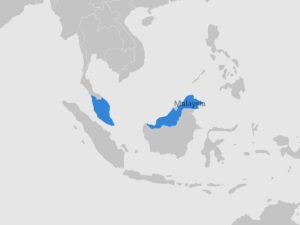
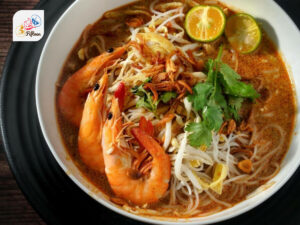
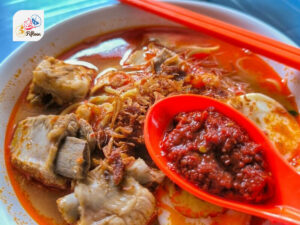
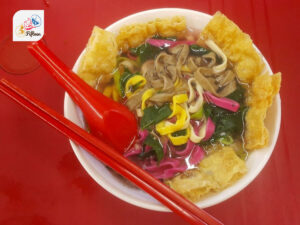
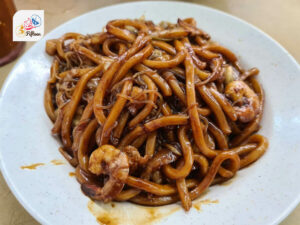
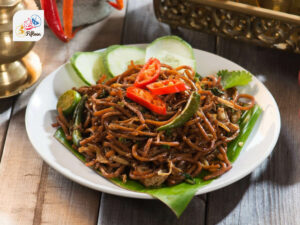
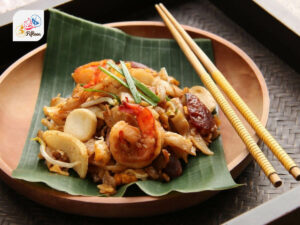
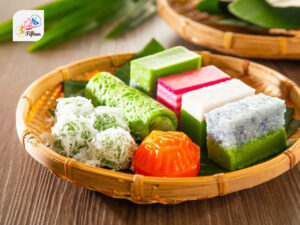
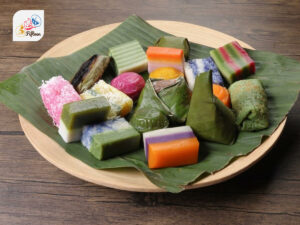
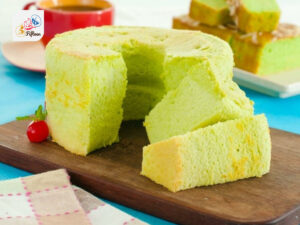
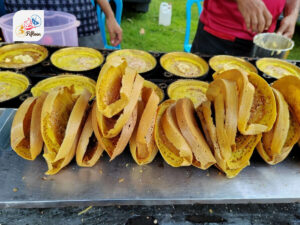
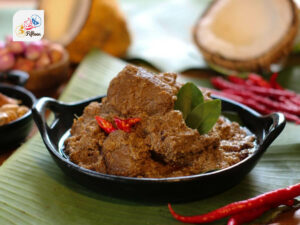
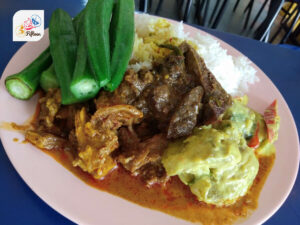
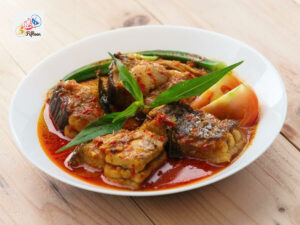
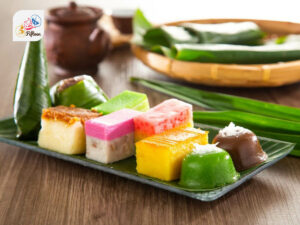
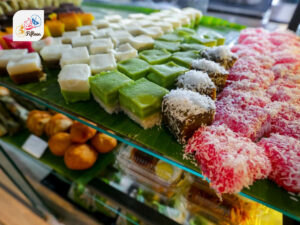
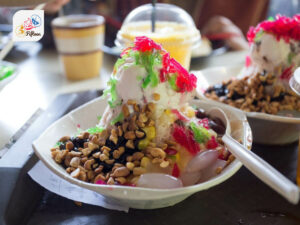
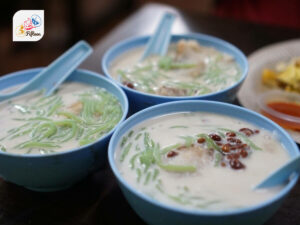
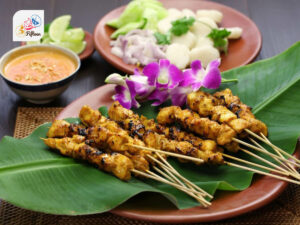
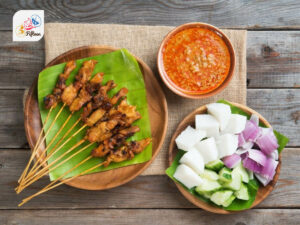
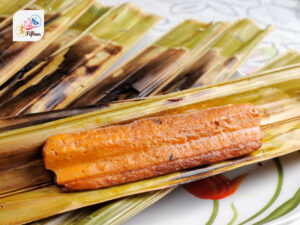
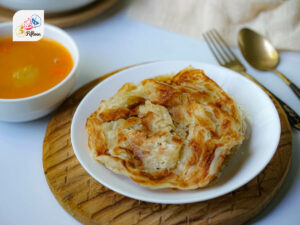
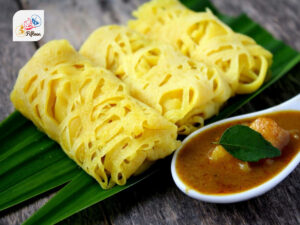
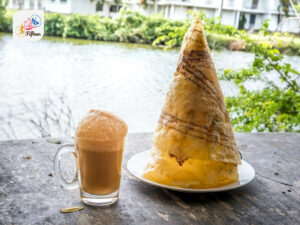
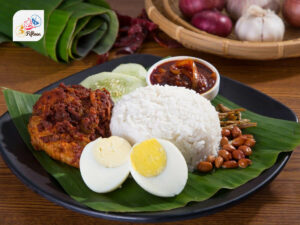
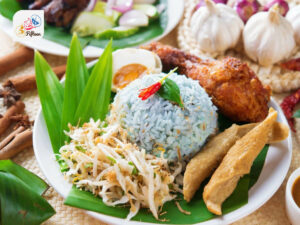
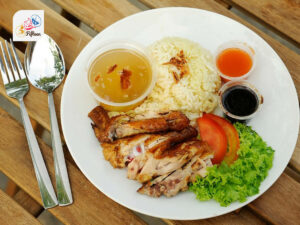
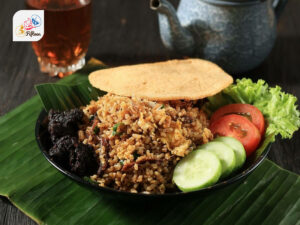
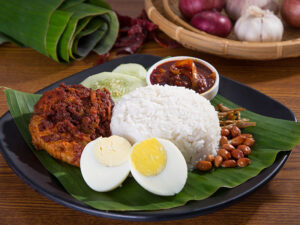
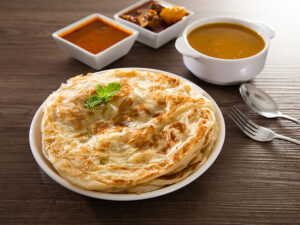
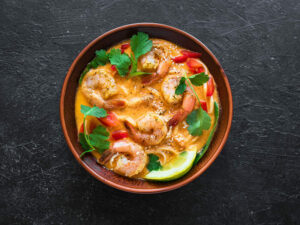
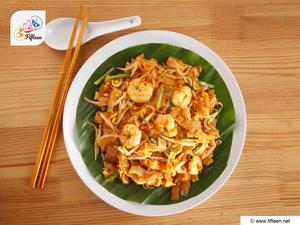
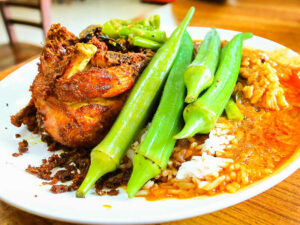

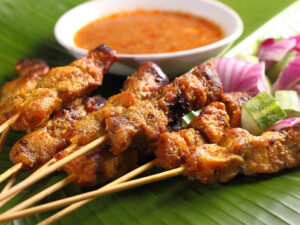
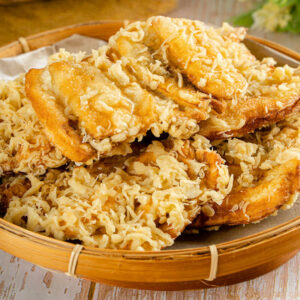
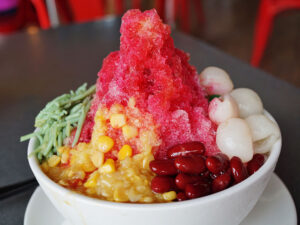
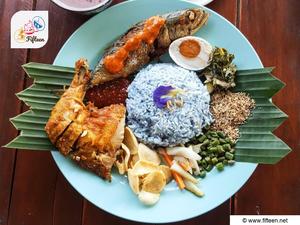
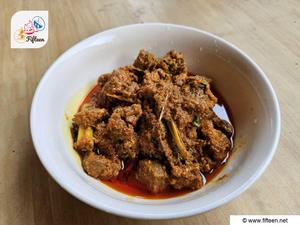
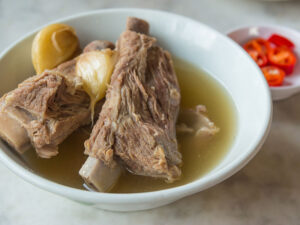
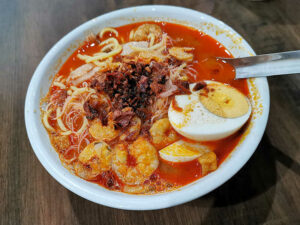
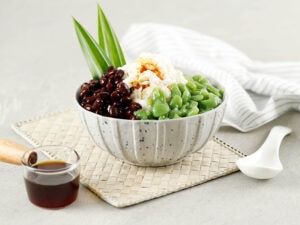
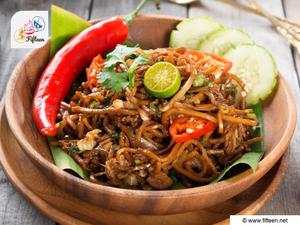
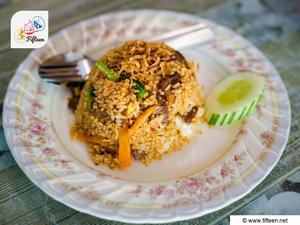
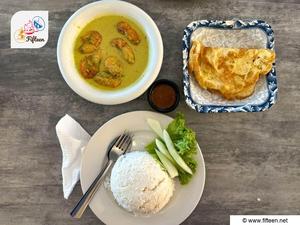
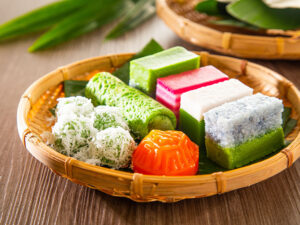
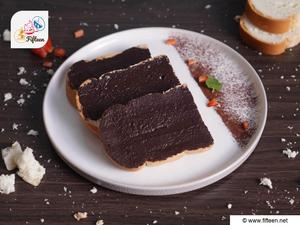
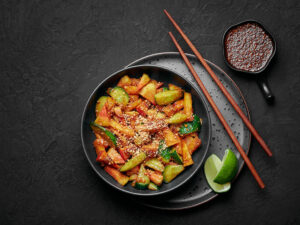
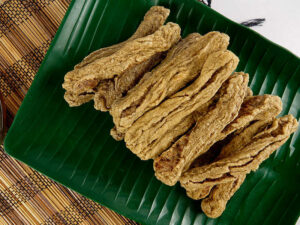
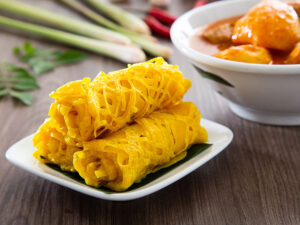
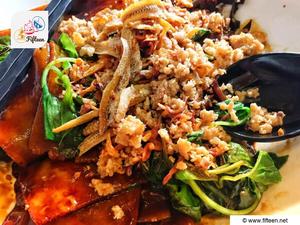
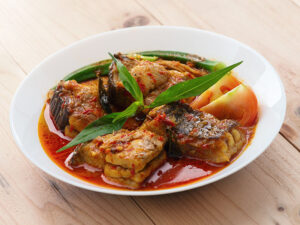
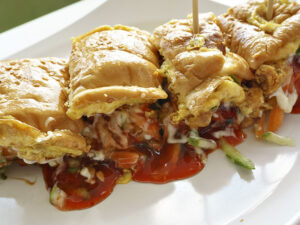
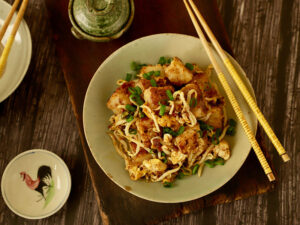
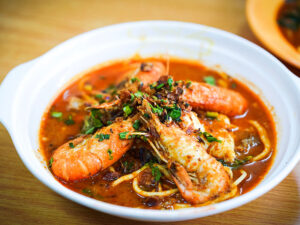
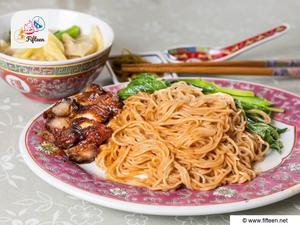
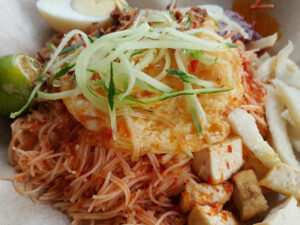
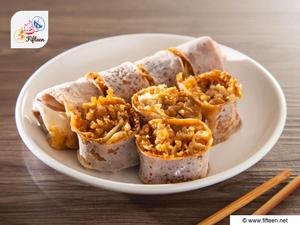
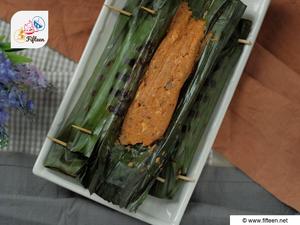
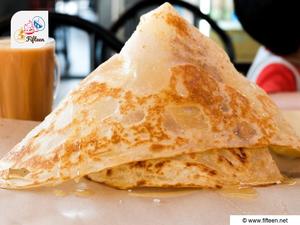
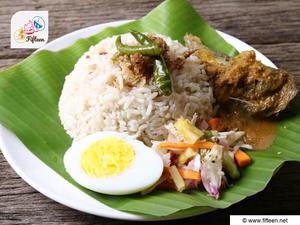
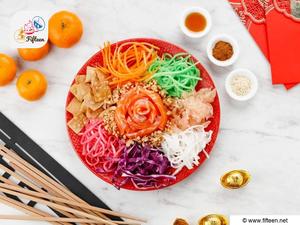
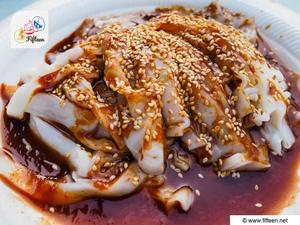
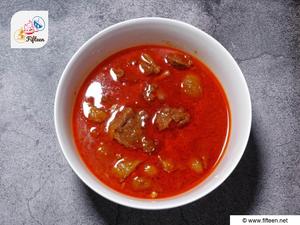
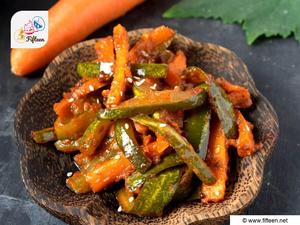
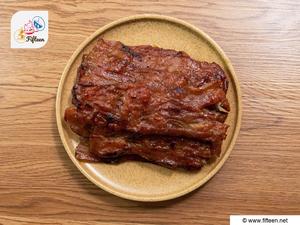
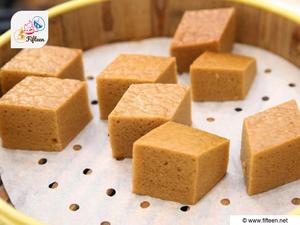
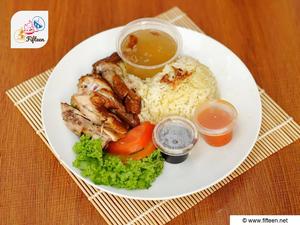
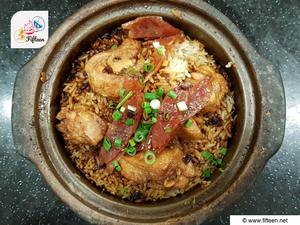
Jamie Scott
Editor in Chief, Senior Content Writer
Expertise
Home Cooking, Meal Planning, Recipe Development, Baking and Pastry, Food Editor, Cooking-video Maker, Western Food Evaluation Expert
Education
Le Cordon Bleu College of Culinary Arts
Local Community College, New York, NY
Jamie Scott is a skilled culinary expert and content creator specializing in Western cuisine. With over 15 years in the culinary field and formal training from Le Cordon Bleu, Paris, Jamie deeply understands how to blend nutrition with delicious flavors. His passion for cooking matches his commitment to making healthy eating accessible and enjoyable.
On Fifteen.net, Jamie brings a fresh perspective to classic dishes and beverages, offering readers insightful recipes, cooking tips, and a fresh view on meal planning that emphasizes taste, health, and simplicity.